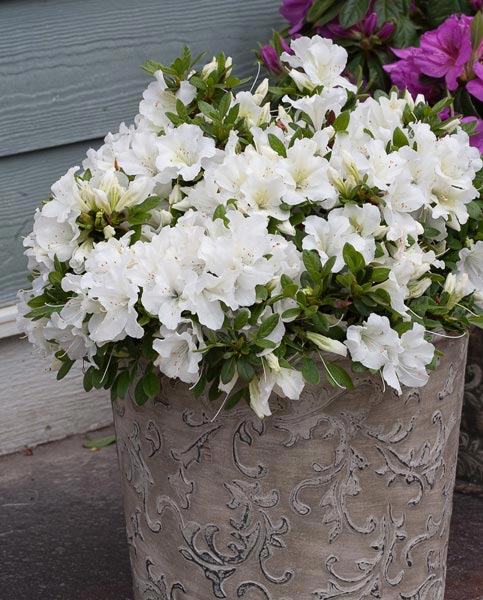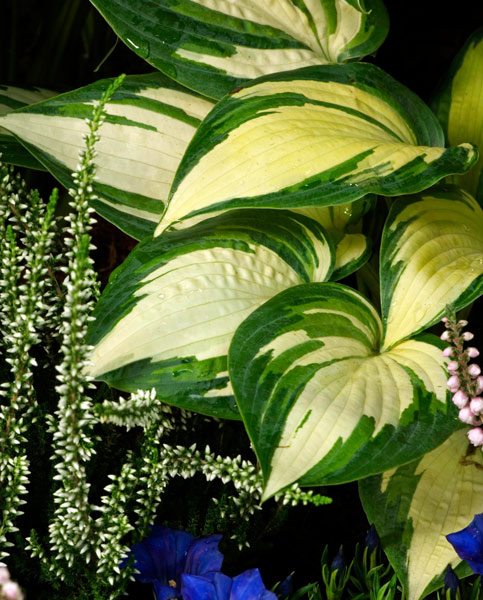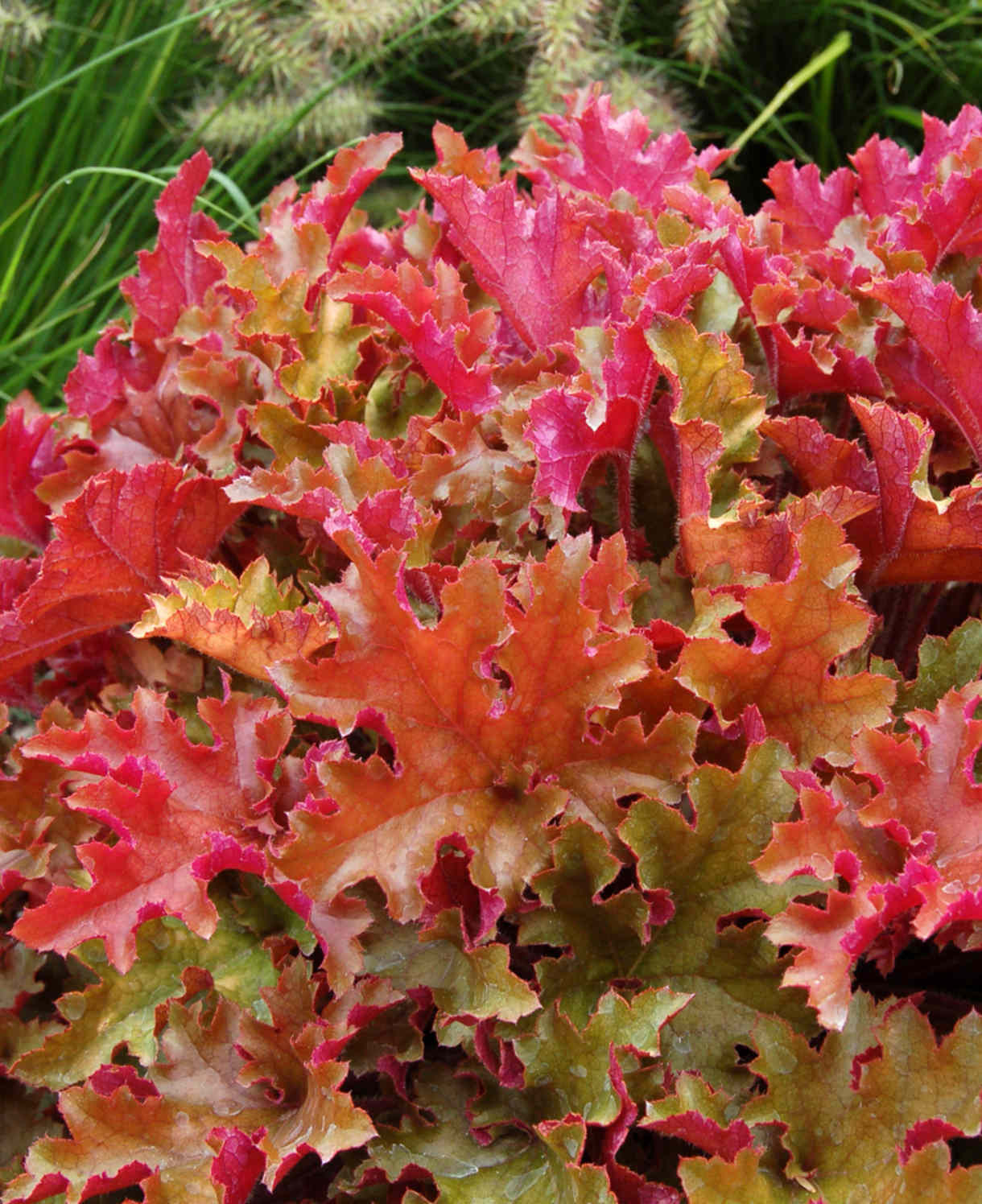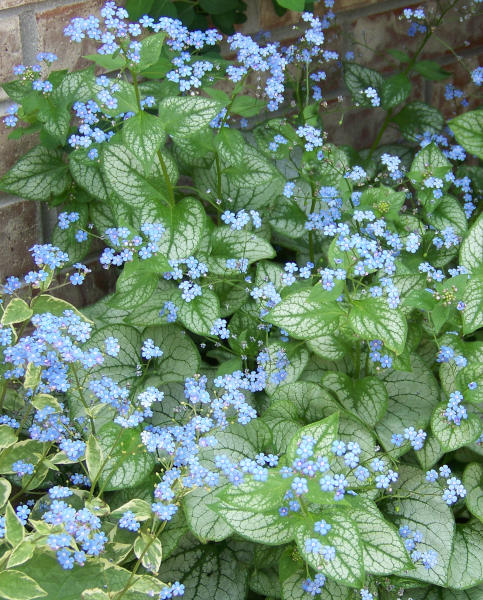How to grow Azalea
A hardy, evergreen perennial which comes in a rainbow of colours and is mostly petite in comparison to its cousin – the rhododendron. Prefers a sheltered location in part sun, part shade which is consistently moist but not waterlogged – the edge of a woodland border is ideal. Azalea can be planted at almost any time of year and are great for attracting bees and pollinators when in bloom between April and October (dependent upon variety). With a height of up to 2 metres and spread of 1.5 metres they are ideal for the middle to back of the garden border or large pots. Plant in humus rich soil and mulch annually with an ericaceous top dressing.

Key Information
Soil pH
Position
Hardiness


Where & when to plant Azalea
Japanese azaleas are valuable and impactful evergreen shrubs which flower for several weeks in April and May in rich and vibrant colours as well as cooler whites and pastels.
Azaleas truly stand out when planted singly next to herbaceous plants in a border. If you have the room, plant several together for real ‘wow’ factor in a large woodland border or Oriental planting scheme.
Azalea japonica also makes a fabulous showy specimen plant for a large pot, looking structurally beautiful all year round.
Your chosen planting spot should be in an area where the soil is consistently moist, well-drained, and never becomes waterlogged. Dappled shade is perfect for Japanese azaleas as full and direct sun can mean that blooms are short-lived.
Like all azaleas and rhododendrons, Azalea japonica loves to grow in humus-rich, acid soil. Planting on the edge of a woodland, or woodland border is perfect where the soil will naturally bear the right conditions. If this is not possible, then your planting hole should be amended with a thick layer or leaf-mould or ericaceous compost prior to planting, and grit for added drainage if you garden on heavy soil.
How to plant Azalea
The roots of azaleas do not like to be planted too deeply underground, so plant your young shrub with the top of root-ball level with the soil surface. You can place a cane horizontally over the top of your freshly dug hole to check the depth before you fill in around the edges with soil. Firm your Azalea into place gently with your foot and water in well afterwards and every other day until established.
If you are planting your Azalea in a pot, use peat-free ericaceous compost with added grit for drainage. Ensure you use a large pot which has room for your Azalea to reach its final size and one which has large holes in the bottom for drainage.

What to plant with Azalea
Azaleas are valuable for providing a splash of colour in the garden once early spring flowers begin to fade.
Plant your azalea where you will appreciate its brilliant show of blooms – perhaps near a seating area, patio, or towards the front of the border. Dense dark green foliage gives structure and texture all year round.
Due to the acidic soil needs of azaleas, it is wise to team them with other plants which thrive in ericaceous conditions such as rhododendrons, Pieris japonica, heathers, Japanese maples, magnolia, hydrangeas, and camellias.
Azaleas make an excellent addition to Japanese gardens or Oriental planting schemes - they look stunning when grown near water where their colours are reflected on the surface on a bright day.
Lush and leafy plants such as ferns, hostas, heuchera, Fatsia japonica, small bamboo, and brunnera will all add to a fresh abundant look and grow happily next to azaleas.
Please contact our friendly and knowledgeable Customer Care Team at Hayloft if you would like any further advice for planting and caring for your Azalea japonica.



How to care for Azalea
Mulch azaleas annually with leaf-mould, ericaceous compost, pine needles, or well-rotted bark – this will provide essential nutrients and will maintain acidity in your soil as well as suppress weeds and help to maintain moisture levels. Apply a layer, several inches thick, of your chosen mulch around the base of your shrubs, or on the top of your pots in autumn.
Azaleas also benefit from feeding with liquid ericaceous fertiliser. Dilute and apply to the soil according to the instructions on the bottle.
Ensure potted azaleas do not dry out in hot or dry spells of weather by watering regularly with rainwater. Tap water can be too alkaline for azaleas. Shrubs grown in the ground should not need watering once established.
Deadhead azaleas soon after flowering to ensure your plant focuses its energy on the next set of buds rather than producing seedpods.
There is no need to prune azaleas which are slow growing and naturally form a neat yet graceful shape. However, you can remove any dead or diseased branches at any time of the year or prune long or congested branches immediately after flowering to maintain a more compact shape.
When pruning, ensure you cut branches with sharp saw or pair of secateurs right back to a stronger branch and avoid leaving a stub which could be susceptible to decay.
How to propagate Azalea
Azalea can be propagated by cuttings, layering, grafting, or by sowing seed.
All methods take patience and time as azaleas are slow growing. However, propagating your own plants is extremely rewarding and it is always worth trying to increase your own stock or growing to share new plants with friends and family.
The easiest and most reliable form of azalea propagation is by taking semi-ripe heel cuttings in mid to late summer.
Use a sharp knife to remove a cutting which is around 15cm long just below the point where leaves are attached to the stem. Remove the leaves from the lower third of the cutting and any flower buds.
Dip the cut end of your cutting into hormone rooting powder or gel before inserting the lower third into a pot of ericaceous compost mixed with a little grit. Water the pot carefully and place it in a bright spot to take root such as an unheated greenhouse or cold frame. Check your cuttings every few days to ensure they are kept moist, watering and misting, as necessary. The cuttings should take 6-8 weeks to root. Once the roots have filled the container, pot the cutting on into a larger pot.




